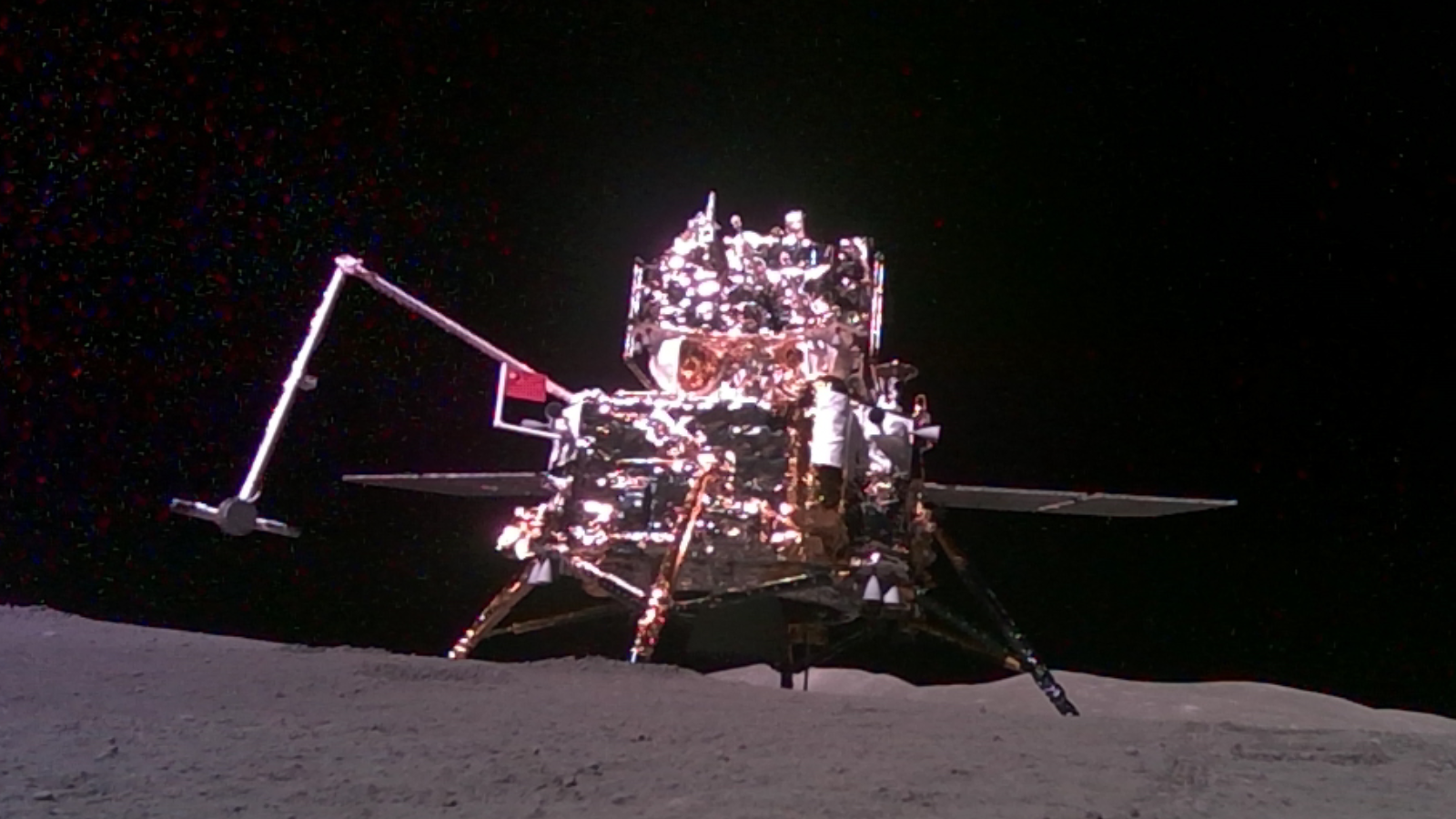
A new video shows how a tiny rover on China's ambitious Chang'e 6 mission used AI to snap an epic shot on the far side of the moon.
The Chang'e 6 lunar far side sample-return mission launched on May 3 atop a Long March 5 rocket. It was disclosed after launch that the spacecraft also packed a surprise rover.
The roughly 11-pound (5 kilograms) rover was deployed on the surface of the far side of the moon and imaged the Chang'e 6 spacecraft after it had completed collecting samples but before the precious cargo was blasted into lunar orbit for a journey to Earth.
Researchers now reveal how highly functional the rover was despite its small size, and how a modeled lunar arena — complete with variable lighting conditions and terrain — was used as a testing ground to train the AI-driven robot to take photos on the moon.
Named Jinchan, which translates to "golden toad," the rover was equipped with significantly enhanced autonomous intelligence and highly integrated, lightweight hardware.
"Though the droid is very tiny, it is very functional. It is capable of autonomous separation, autonomous movement and lunar imagining," Xing Yan, staff member of China Aerospace Science and Technology Corporation (CASC), told China Central Television (CCTV).
"After reaching the surface, it can detach from the lander by itself and move to a relatively suitable location for taking pictures. And it was able to intelligently choose the best angle and composition, leaving some precious memories for the Chang'e 6 mission."
The rover utilized neural networks to learn from experiences and make adjustments like changing photographic angles, Xing said.
This allowed Jinchan to get into position for a perfect shot of its mother spacecraft. Such operations with earlier missions required pre-calculation of the relative distance between a lander and a camera on a rover, the orientation and the best time to snap a photo.
"We are more concerned about the position of the main body's position and the angle of some sunlight. The reflection may be too strong in some angles, which is not our ideal situation," said Huang Huang, another staff member of CASC.
China sent the Yutu rover to the near side of the moon with the Chang'e 3 mission in 2013 and Yutu 2 to the far side on Chang'e 4 in 2019. Each Yutu weighed around 310 pounds (140 kg). But the tiny Chang'e 6 rover was much more self-sufficient in terms of executing its goal.
"We tried our best to make it as knowledgeable as possible, to construct these physical samples, to do some feature modeling of the environment, and in such an environment, we let the rover learn and finally realize the intelligent decision support when taking pictures," Huang said.
After Jinchan took its image, an ascent vehicle blasted off from atop the Chang'e 6 lander on June 24, carrying 68.27 ounces (1,935.3 grams) of precious samples into lunar orbit. From there, the ascender docked with an orbiting service module for a return to Earth.
A reentry capsule landed in the grasslands of Inner Mongolia on June 25, successfully delivering the first-ever lunar far side samples to Earth for analysis.







